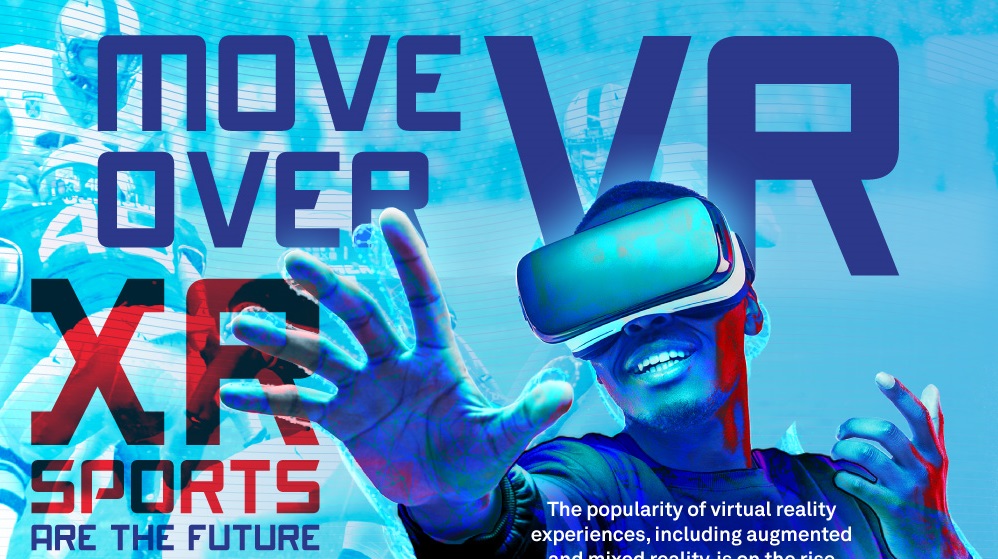The consumer market for extended reality tech is growing at an increasing rate and by 2023, the consumer market for extended reality devices and software is projected to reach $18 billion. This makes sense as today’s generation spends more time at home – Americans aged 18 to 24 years spend 70% more time at home then previous generations. On top of this, the COVID-19 pandemic is forcing most people to stay in their homes making this kind of tech even more popular than before.
Extended reality devices can help fill the gap that is created by people no longer being able to go to work in an actual office, travel to vacation spots, or go to a gym for exercise. Using extended reality, meaning combining augmented, mixed, and virtual reality, we can create real sports nearly anywhere. Interacting with extended reality in the future may look both similar and different than the way we currently are experiencing it. In the future, we will be using a combination of real sports gear along with a lightweight head mounted display, alongside monitoring equipment that tracks the movement of all equipment and body movements and using a sophisticated and powerful physics engine to drive and interact with a virtual world. AI will also play a major role in the development and usage of this hardware and software. High-speed cameras, sensors, and computer vision will be tracking all the action, and AI will help to predict chances of success based on real-time collection of data. AI will also be able to analyze players’ performance and compare it to standard health parameters and will be able to let players undergo physicals to see how healthy and how effective virtual sports are.
Learn more about the virtual sports of the future and what technologies are already up and running here:


